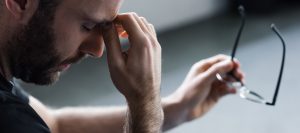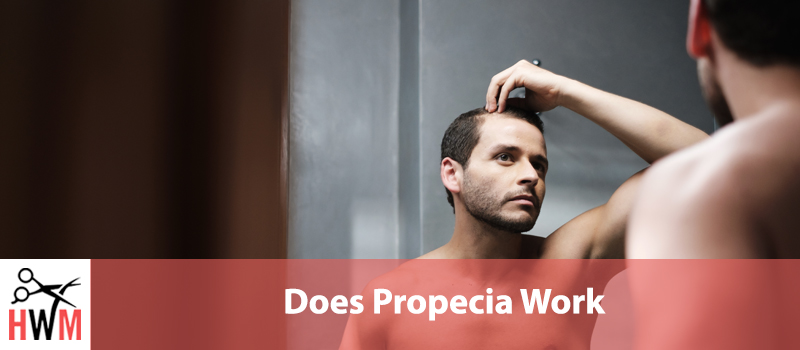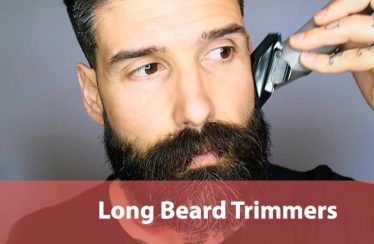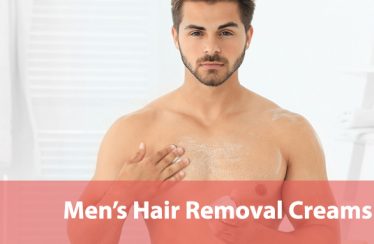If you have experienced hair loss, or are already treating hair loss and are looking for better results, you’ve probably wondered if Propecia might work for you.
Taking a pill is usually easy to add into your daily routine. But a pill that’s scientifically proven to grow your hair? That sounds a little too good to be true. Fortunately, Propecia is real, and while it isn’t a miracle drug, it is an FDA approved treatment for hair loss.
Propecia does require a prescription from your doctor, so this article is for information only. You should consult with your doctor or dermatologist if you’re interested in trying Propecia for yourself.
But, this guide will help you make a decision, and give you some background information for your appointment. We’ll discuss what the drug is, how it works, how long it takes to see results, the known side effects, and how you can incorporate Propecia in with your existing hair care routine. We’ll also discuss some other hair loss options that you can use instead of, or at the same time as, Propecia.
- What is Propecia
- How Does Propecia Work?
- What is the Timeline for Propecia Effectiveness?
- Possible Side Effects
- Companion Treatments
What is Propecia
Propecia is the brand name of Finasteride. Finasteride was originally approved as a treatment for enlarged prostates. Doctors noticed a consistent trend in their patients after the drug was approved. The men who took the drug had improved hair growth. Many of them had previously had hair loss and saw hair come back.
Finasteride was taken back to trial and tested at a weaker concentration for its use in hair loss. It’s prescribed at about 1/5th the dose used to improve prostate health and works for approximately 80% of men who use it.
It was approved a few years after Rogaine and is still one of only a handful of treatments that have passed scientific scrutiny as a legitimate treatment for hair loss in men.
How Does Propecia Work?
Propecia, or Finasteride, is a 5a-reductase inhibitor, which means it helps prevent testosterone from converting to dihydrotestosterone (DHT), which is a more potent version of the hormone.
DHT is one of the big movers and shakers behind hair loss. While it can encourage facial and body hair growth, it shrinks the hair follicles in your scalp, shrinking the hair strand and eventually not grow at all.
Finasteride has been shown to reduce DHT in your system as much as 70%. The level of testosterone in your system also increases a little when you’re taking Finasteride since it’s not being turned into DHT. However, testosterone levels stay well within normal and safe levels.
By reducing the amount of DHT in the system allows your hair follicles to grow normally. Once your hair follicles are back to normal size, they start growing hair again, filling in thin patches and growing back hair that’s been lost.
Both the manufacturers of Finasteride and the scientists who have studied it, warn that you may see less growth just above your temples, where hair loss can give you a distinctive widow’s peak.
Fortunately, having a widow’s peak can be quite an attractive look for most men, so don’t panic if you don’t see good results in that area.
Propecia, even in low doses, can still influence your prostate while you’re taking it. You should let your doctor know that you take Propecia before any tests and before your prostate exam so they can factor the medication’s effects into your results.
What is the Timeline for Propecia Effectiveness?

Propecia, like Minoxidil and other hair loss treatments, has to work with your hair follicle’s natural growth cycle to be effective. You won’t see results the first day, or even the first week you’re taking the pill.
The hair on your scalp has a several year growth cycle. Your hair can grow for a couple of years, enter a holding phase for a few months, where the follicle rests but doesn’t shed the hair, and then each hair is shed a few days before a new growth phase can begin.
Propecia works with your hair follicle, bringing dormant follicles back into anagen, the active growth phase, sooner than they would on their own. It also works to heal previous damage by giving your follicles a chance to grow without DHT interference.
You might see slightly more hair loss in the first few weeks of taking Finasteride. Like minoxidil, which has similar early treatment effects, that loss is the result of your hair follicles shedding the hair strand sooner so that they start growing new, stronger, hair.
Most men start seeing some regrowth within 3-6 months of starting to use Finasteride, but it takes 4-12 months for those results to be significant. If you’re still not getting hair growth after 12 months, you should stop taking Finasteride.
4 months is about average for hair growth to be visible. If you’ve lost hair around the crown of your head, or have a receding hairline, you’ll probably notice that the hair you still have gets thicker before you start growing hair where you’ve lost it entirely.
That delay is mostly because hair follicles that have stopped working are usually more damaged. Thinning hair is often a sign that your follicle is spending less time in anagen, not that it’s stopped working entirely.
But when all your hair falls out in a specific area and doesn’t grow back, its because the follicles have shrunk past the point they can effectively grow hair.
Now, Propecia, like most other hair loss treatments, is most effective if you catch your hair loss early. The more you’re working to preserve your hair, and the less to re-grow it, the better your results are likely to be.
Your doctor or dermatologist should be able to evaluate your hair loss and give a good idea of what you can expect from Propecia.
It also tends to work best in the first few years you take it. Propecia, like Rogaine, isn’t a cure for hair loss. It’s a treatment, and you need to continue the treatment to maintain your results.
If you stop taking Propecia, within a year your hair loss will return and progress like it would if you never took the drug.
It’s effectiveness also wears down over time. You will still likely experience some degree of hair loss. The hair loss will start again a few years after you start taking Propecia. For most men, this hair loss is never as severe as it would be without taking the drug.
Propecia also works better if you’re under 40 when you start taking it.
Possible Side Effects

Propecia has a significant internet presence as a drug with nasty side effects. Fortunately, the studies we have now all point to Propecia being a very safe drug with a small incidence of side effects.
More studies are being done, in part because of an increase in anecdotal reports of severe side effects. For now, we’re basing our information on the studies that have been published and agree with the vast majority of doctors who think Propecia is safe to take and use.
If you do start noticing side effects, you should immediately discontinue use and consult with your doctor.
Instead of listing every possible reaction, we’re going to focus on the 4 most severe/concerning reactions. All 4 reactions are rare, but worth thinking about.
Allergic Reactions
Just like any medication, there is a small chance that you’ll have or develop an allergic reaction. Most reactions are mild, headaches and hives, but more severe reactions are possible.
If you have a tingly feeling after taking the drug, develop hives, chronic headaches, or other adverse reactions, discontinue use and consult a doctor. More severe reactions may warrant a trip to urgent care or an emergency room.
Memory Loss
This is one of the rarest side effects that can come with Propecia. For the most part, reports of memory loss are anecdotal.
However, this is one of the side effects that, reportedly, can stick around for some time after you stop taking Propecia.
Just to emphasize, this side effect is very rare. However, according to the men who report it, it can vary from mild cognitive impairment to true memory problems.
We couldn’t find any studies with an unbiased sample that mentioned or focused on memory loss as a side effect of brand name Propecia or any of the generic versions.
Sexual Dysfunction
Sexual dysfunction is the primary concern a lot of men have when starting Propecia. After all, keeping your hair, or growing new, is usually at least in part because you want to look good for potential partners.
Great hair does not make up for other issues in bed.
The sexual side effects seem to come in three varieties, erectile dysfunction, problems with ejaculation, and changes in quantity or quality of ejaculate.
This side effect, while rare, is fairly well documented. Many doctors recommend pausing taking Propecia if you’re trying to conceive. Fortunately, Propecia has a short half-life and is completely out of your system within 24 hours. So your fertility should return to normal within a couple of days of ceasing the drug.
Some doctors recommend stopping Propecia proactively, 1-2 weeks before attempting to conceive. Others only recommend stopping Propecia if it takes more than a few months of trying.
You can also talk to your urologist or go to a fertility clinic if you have other concerns.
Outside of trying to conceive, most men find the erectile dysfunction and low libido to be more troublesome than the other side effects of Propecia.
If you already take medication for erectile dysfunction or have any concerns in that department, it’s important to discuss that with your primary care physician.
Like memory loss, sexual dysfunction that develops as a result of Propecia can persist even after you quit taking the drug. The duration of the side effects, and how severe they are, and whether they respond to other treatments, is still not well known.
Depression / Other Mental Health Disorders
The last serious side effect that can come with Propecia is low mood, generally depressed feeling, and depression.
Like the other side effects we’ve listed, this is rare, and reports are largely anecdotal pending new scientific studies investigating the issue.
If you start taking Propecia and notice that your mood is beginning to drop, it’s worth mentioning to your doctor. Other symptoms of depression can include emotionlessness, unexplained fatigue, changes in your appetite, and lacking interest or enjoyment in your old hobbies.
You should also talk with your doctor, and your therapist if you have one, about taking Propecia if you already have a diagnosed mood disorder. They might recommend management techniques or be on the lookout for new symptoms and problems to help you manage.
Nocebo
This isn’t a side effect, but it may be behind the sudden increase in people reporting side effects from Propecia.
Nocebo is essentially the opposite of the placebo effect. If you know about and expect negative interactions and side effects from a new drug, you’re more likely to notice or develop those negative effects.
Although not as well established as a scientific concept, nocebo is likely as potent a force in medicine as the placebo effect.
People who take a placebo do usually see some improvement in their symptoms. It’s thought that simply thinking you will improve causes real physiological improvements. That’s why all new drugs have to prove that they are a better treatment than a placebo. It’s not that the placebo isn’t doing anything, but you have to prove that people wanting the medicine to work isn’t the reason it does.
Nocebo, similarly, might cause a side effect you’re particularly worried about. Because you’re worried about it, and a part of you thinks it’s a real risk, your brain and body can make it more likely.
The best thing you can do, when starting a new treatment, is to stay positive and believe that it will work. Take advantage of the placebo effect, and try to worry about side effects as little as possible.
Companion Treatments
Propecia and generic Finasteride don’t have to be the only treatment you use to combat hair loss. Doctors and dermatologists often recommend combining Propecia with topical minoxidil treatments and other routine and lifestyle changes to get the most from the treatment.
This section is meant for general information, you should talk to your doctor and do additional research before adding any of these options to your hair care routine.
Rogaine
Rogaine, or generic minoxidil, is often recommended as a companion treatment with Propecia. Some doctors also prescribe Propecia if you’ve tried Rogaine and it isn’t working as well as you wanted – the Propecia isn’t meant to replace the Rogaine, but to work with it.
Interestingly, Rogaine and Propecia seem to have a synergistic effect. Together they work better than either would alone, and even better than the combined effect should be.
Like Propecia, Rogaine needs to be used every day, once or twice a day. If you start Rogaine and decide to stop using it at any point, you will lose the hair Rogaine helped you grow.
The most common side effects of Rogaine are mild irritation of your scalp and unwanted hair growth on your forehead or the tops of your ears. For most men, all the side effects are manageable, though more serious side effects are possible.
Rogaine also works to create an ideal environment for your hair follicles. Between Rogaine encouraging circulation and hair follicle growth, and Propecia eliminating DHT, you have an ideal combination for hair growth.
They also both take about 3-6 months to work. Even if you start both together you should expect it to take a few months to see results.
Hair Loss Shampoo

Hair loss shampoo won’t save your hair by itself. Many doctors are skeptical that hair loss shampoo works at all. Very few studies have been done on the effects of hair loss shampoos, and the results are mixed.
That said, some shampoos show promise. Or, more specifically, some shampoo ingredients that show promise.
If you decide to use a hair loss shampoo, avoid shampoos with lots of parabens or sulfates since those ingredients can irritate your scalp. You should also avoid shampoo with a lot of alcohol since too much becomes drying.
Some hair loss shampoos will advertise reducing DHT, a good sign. Moisturizing shampoos can help your hair stay stronger and healthier after it’s grown in but won’t encourage growth on their own.
Look for a shampoo that contains caffeine, yes, like your coffee, or ketoconazole. Both caffeine and ketoconazole are considered the best prospects for increasing hair growth.
Other ingredients, like peppermint, tea tree oil, and natural oils and butters, might be good for your hair but haven’t been evaluated for hair growth in humans.
Some shampoos will advertise peppermint or lavender oil as hair-growth boosters. The truth is that both peppermint and lavender have been shown to boost hair growth in rat and mouse studies, but not in humans.
Still, there is some anecdotal evidence of men having good results with those essential oils or shampoos that contain them.
Supplements
Another option, and one your doctor might recommend, is taking supplements. Supplements can help make sure your body is getting the nutrients it needs to grow healthy, thick, hair.
Unfortunately, supplements aren’t well regulated.
While some supplements might be very effective in fighting hair loss, not every supplement or brand will contain the ingredients or potencies they advertise.
Especially if your doctor recommends you try a supplement, ask them to recommend a brand that has worked well for other patients. That will help you choose a high-quality supplement.
There are a few options that might help with hair loss. This isn’t an exhaustive list, but it’s a decent place to get started.
Multivitamins
Multivitamins are probably the safest and most effective option. Multivitamins are commonly available and are designed to meet the minimum requirements your body needs for a wide variety of vitamins and minerals.
You’ll still be getting more nutrition from your diet, so don’t worry if it seems like your multivitamin doesn’t have much of certain key vitamins.
These vitamins are likely the most effective because vitamins and minerals are often dependent on other vitamins and minerals being available during digestion.
You need magnesium and Vit D to properly process calcium, for example.
A multi can boost your overall health, and leave more nutrients available for the growing hair follicles in your scalp.
Biotin
Biotin is one of the B vitamins and is commonly connected with skin, hair, and fingernail health.
Some preliminary studies do show that biotin supplements can improve hair growth. Admittedly, though, some of that effect may be that healthier hair looks fuller and more voluminous than damaged hair.
Since the biotin likely makes your hair stronger and healthier, it may be masking your hair loss rather than treating it.
Biotin is also a water-soluble vitamin, which means it’s very safe to take. It would take an extremely high concentration of biotin for the vitamin to become toxic. However, if you take too much, it can turn your pee bright yellow.
Hair Skin and Nails
Hair skin and nails formulas are slightly different between brands. Usually, these vitamin and supplement complexes include Biotin, vitamin C, and maybe a couple of other herbs or vitamins.
They can be found in gummy and pill forms, and you can typically find them in any grocery store health section.
Studies have shown that some hair skin and nails supplements are effective at improving hair and skin health, although results do vary from supplement to supplement.
There haven’t been many studies on the effectiveness of these supplements for treating hair loss, but anecdotally they have worked for some people.
Pumpkin Seed Oil
Pumpkin seed oil is a newer supplement, and there isn’t much science supporting it yet.
That said, some men do report significant hair growth taking pumpkin seed oil supplements by themselves, or in combination with saw palmetto and the other supplements on this list.
We’ve included this supplement in this list, less because there is a lot of evidence, but more because it’s a growing trend. Whether you decide to trust this new supplement should be a discussion between you and your doctor.
Conclusion
Overall, Propecia is one of the most effective hair loss treatments for men. There are some small risks of side effects, but those effects are rare and may have been exaggerated in recent years.
You can use Propecia by itself, or in conjunction with other treatments, although you do need a prescription to get it.
Propecia should never be used by women or children, and even handling broken or damaged pills is not recommended.
But, if you’re looking for serious hair loss treatment, Propecia is one of the best options available right now.




